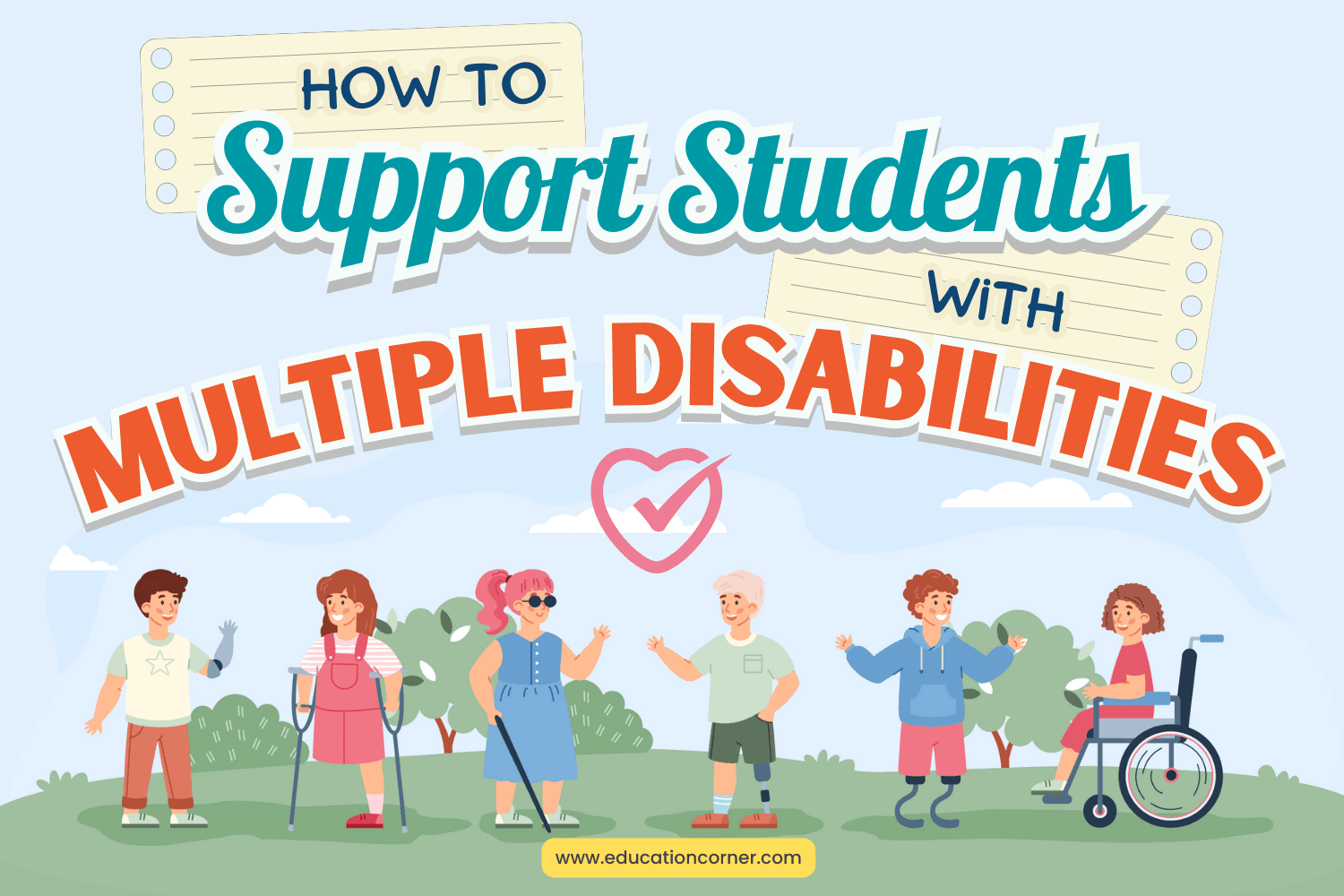“Multiple Disabilities” is a broad umbrella term meaning, simply, that the student has more than one disability. The specifics of this diagnosis are almost endlessly variable, and great care needs to be taken to adjust individual educational support to the child’s particular needs.
The cause of multiple disabilities are as varied as the diagnosis itself. The condition may be the result of a traumatic brain injury (TBI), or a genetic disorder, or a chromosomal abnormality, or premature birth, developmental delay, etc.
Children with multiple disabilities have a combination of more than one disability, such as intellectual disability, mobility issues, visual or auditory deficits, language delay, brain injury, and more. The term “multiple disabilities” does not specify which of the many possible disabilities a student has, nor does it specify how severe those disabilities are. The specifics vary greatly by the individual.
How to Best Support Students with Multiple Disabilities
Students with multiple disabilities often need support in every aspect of their life, both in the classroom and beyond. Often, there are medical implications of these disabilities as well as educational implications.
First and foremost, it is vital to understand the nature of the child’s disabilities (to the fullest extent possible), and tailor your interventions accordingly. A student with hydrocephalus and autism, for instance, will need a very different set of treatments than a student with cerebral palsy and deafness.
Early intervention is crucial, and early intervention services are available in most communities. Many schools offer pre-kindergarten child development resources to help students with disabilities. These service centers help children with mobility, adaptive learning methods, and more. The earlier the intervention, the better the outcome.
Usually, a team of professionals is necessary to adequately address the student’s needs. This team will include speech pathologists, physical and occupational therapists, music and art therapists, and more. Communicate regularly with this team to assess the student’s progress and strategize effective teaching methods.
Communication between the school, home, and any external agencies which work with the child, is crucial.
Inclusion in general education classrooms is very important for social and cognitive development. Many students are able to receive instruction in a general classroom with some assistance, but the majority of students need to be placed in a special education classroom with limited integration into general education classrooms.
Integration into the general education classrooms is helpful not just for the disabled student, but for the other students as well. Integration of disabled students into general classrooms provides a valuable lesson in diversity and respect. As a teacher, it is your responsibility to ensure that all students treat the disabled child with respect.
Students with multiple disabilities–especially those with medical issues affecting mobility–often need special equipment in the classroom. This equipment may include standers, wheelchairs, gait trainers, and changing tables.
Special education teachers, working together with the team of professionals mentioned above, need to prepare an Individual Education Plan (IEP) for students with multiple disabilities. IEPs take into account the abilities of the student, and map out a series of goals to work toward throughout the school year.
These goals may fall into the categories of academic performance or adaptive life skills, such as attending, basic yes/no communication, or hygiene. The IEP is a guide for best supporting the student’s individual needs, and must be carefully designed as such.
Depending on the severity of the disabilities, these students may need help in literally every aspect of their life. Special education teachers may need to help the student eat, move, or use the toilet.
Students with multiple disabilities benefit greatly from adaptive technologies, such as computerized talkers or tablets. Choice boards, which allow the student to choose from a small number of pictures on a board, are another effective means of communication.
Safety is a concern for these students, especially those students with medical issues or mobility problems. These children are apt to fall and hurt themselves, have grand mal seizures without warning, or need some other form of urgent attention. These issues should be carefully outlined in the student’s IEP, and the teacher should be constantly on the lookout for any warning signs, ready to call for assistance if necessary.
When giving academic instruction, assess your student’s abilities realistically, and adjust your expectations accordingly. These students can become very frustrated very easily, which only causes more problems. Challenge your student to learn, and keep them motivated, but don’t push them so hard as to cause them agony.
In Summary
There is no one-size-fits-all approach to teaching students with multiple disabilities. Their needs are so varied that great care is required when choosing the best strategy for support. As their teacher, it’s your job to realistically assess their condition and decide on the most beneficial course of action.
But remember: you’re not alone in this challenge. Supporting these students is definitely a team effort. Consult with the other professionals working with your student, communicate with the parents and support agencies, and, together, decide how you can be of most service.

